Abstract
Hampar, Berge (National Institute of Dental Research, Bethesda, Md.). Persistent cyclic herpes simplex virus infection in vitro. II. Localization of virus, degree of cell destruction, and mechanisms of virus transmission. J. Bacteriol. 91:1959–1964. 1966. The localization of virus, degree of cell destruction, and mechanisms of virus transmission in persistent herpes simplex virus-infected cultures were studied. The major fraction of infectious virus was associated with the medium and a minor fraction was associated with the attached cells. Virus in the medium was further separable into a sedimentable (cellular) fraction and a nonsedimentable (extracellular) fraction. The sedimentable fraction was comprised of cellular debris, most of which appeared to contain viral antigen, and intact cells of which less than 10% contained infectious virus. Cell destruction during the cycle involved more than 99.9% of the maximal number of cells present. Infection could be transmitted by extracellular virus, cell-to-cell transfer, and reattachment of infectious cellular material. The results indicated that transmission by reattachment was probably mediated through the cellular debris rather than the intact cells.
Full text
PDF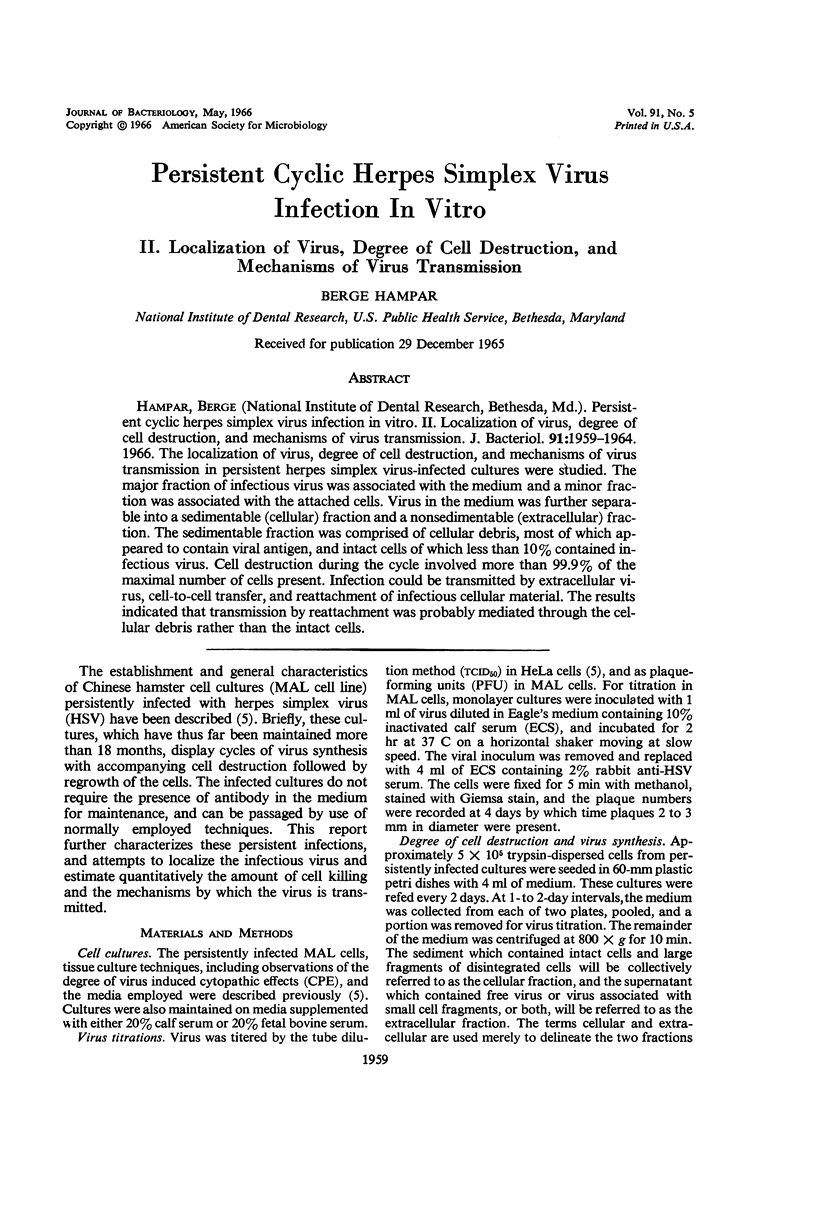
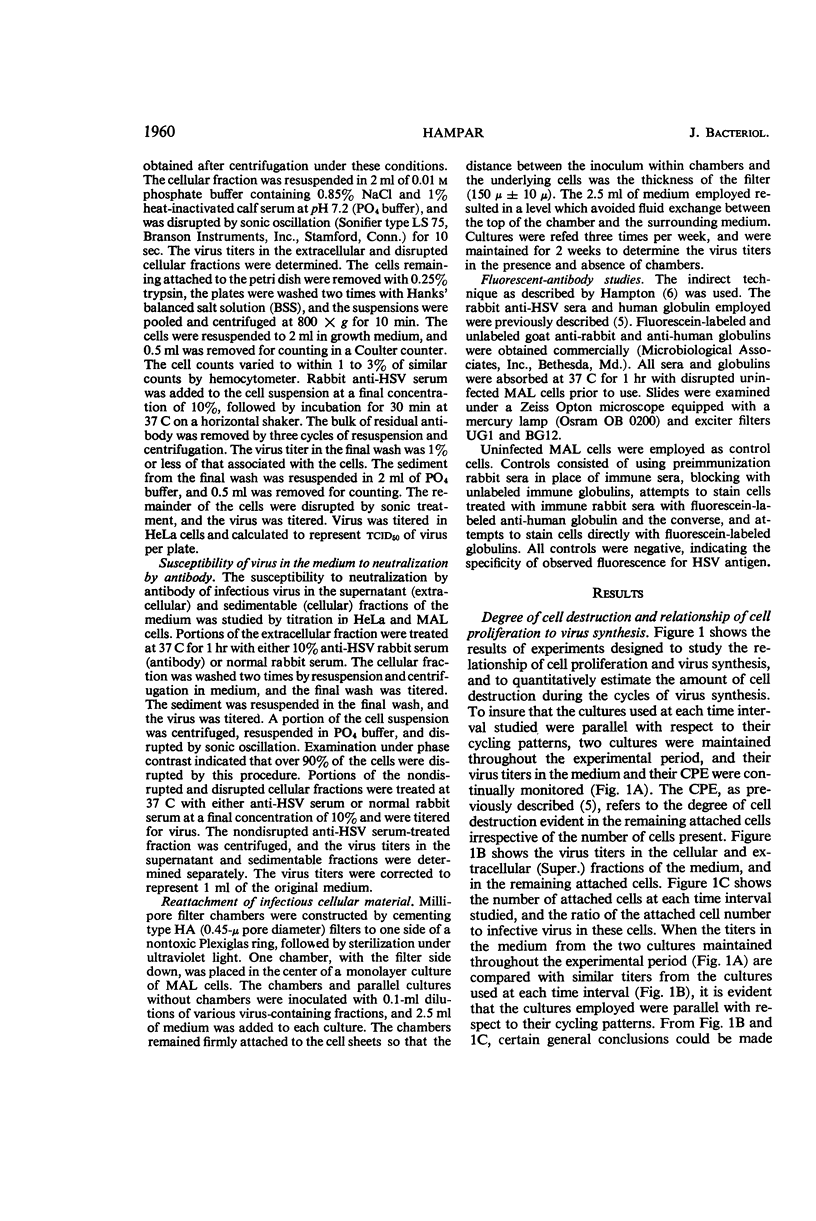
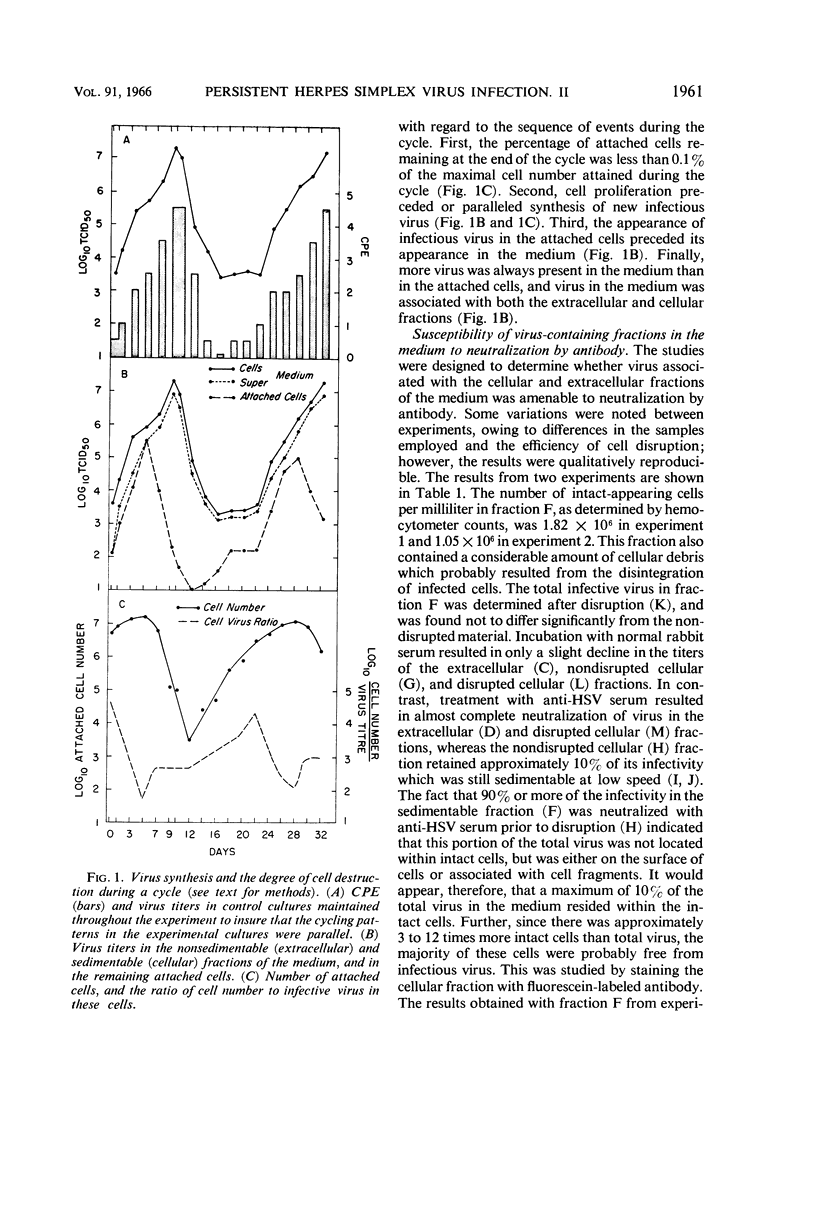
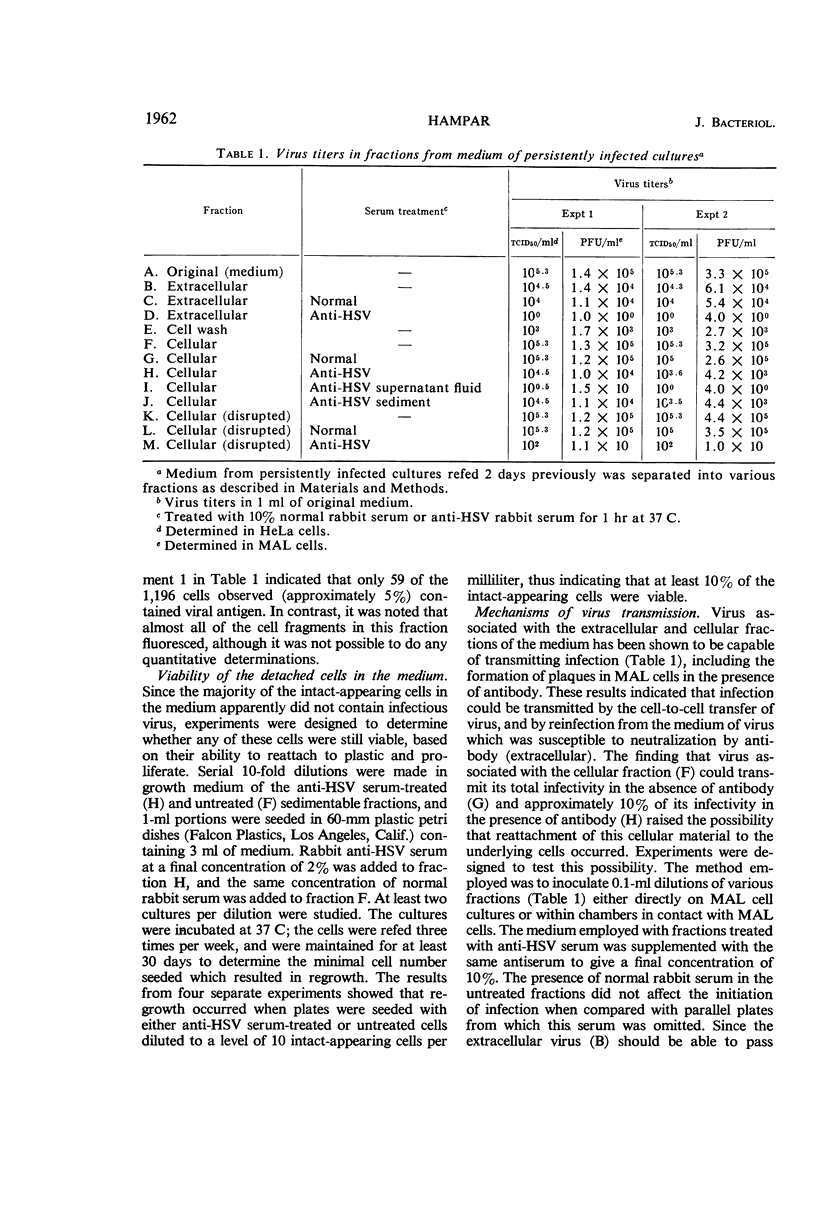
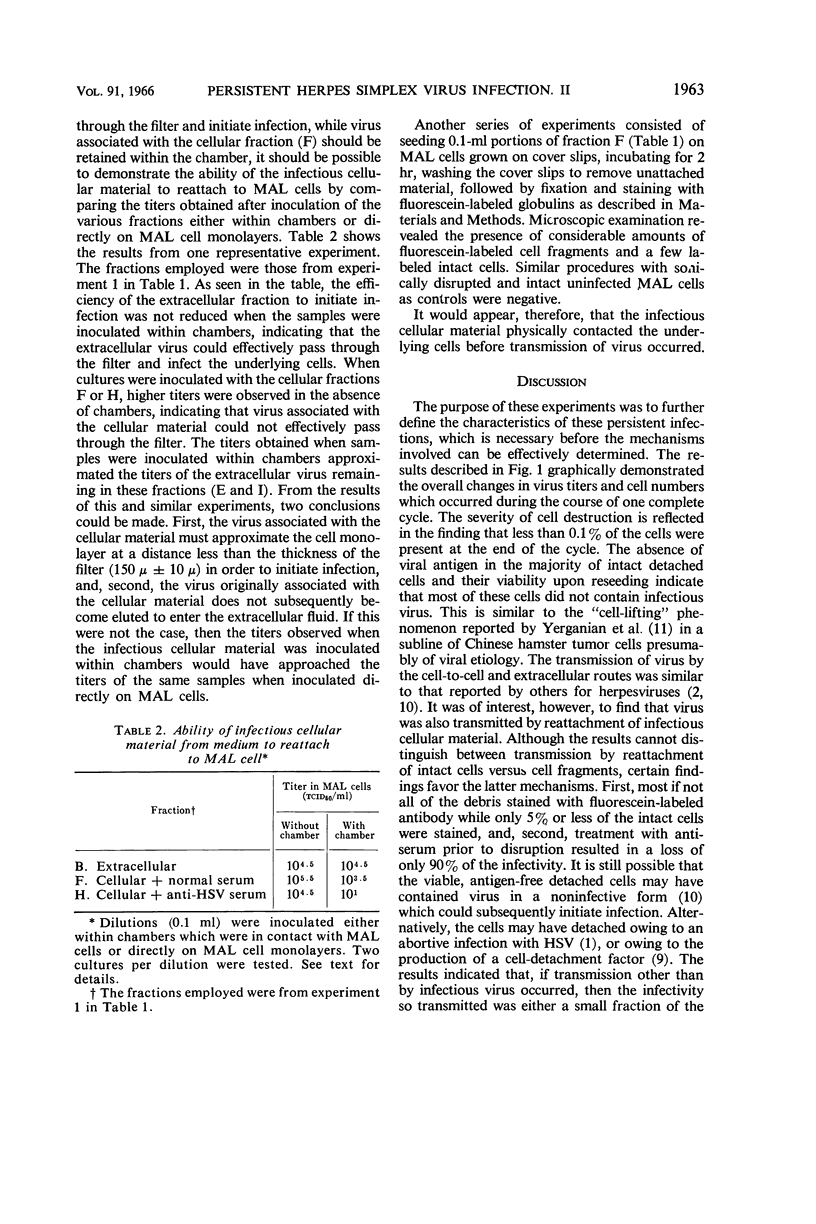

Selected References
These references are in PubMed. This may not be the complete list of references from this article.
- AURELIAN L., ROIZMAN B. THE HOST RANGE OF HERPES SIMPLEX VIRUS; INTERFERON, VIRAL DNA, AND ANTIGEN SYNTHESIS IN ABORTIVE INFECTION OF DOG KIDNEY CELLS. Virology. 1964 Apr;22:452–461. doi: 10.1016/0042-6822(64)90066-2. [DOI] [PubMed] [Google Scholar]
- BLACK F. L., MELNICK J. L. Microepidemiology of poliomyelitis and herpes-B infections: spread of the viruses within tissue cultures. J Immunol. 1955 Mar;74(3):236–242. [PubMed] [Google Scholar]
- DEINHARDT F., BERGS V. V., HENLE G., HENLE W. Studies on persistent infections of tissue cultures. III. Some quantitative aspects of host cell-virus interactions. J Exp Med. 1958 Oct 1;108(4):573–589. doi: 10.1084/jem.108.4.573. [DOI] [PMC free article] [PubMed] [Google Scholar]
- HAMPTON E. G. VIRAL ANTIGEN IN RAT EMBRYO IN CULTURE INFECTED WITH THE H-1 VIRUS ISOLATED FROM TRANSPLANTABLE HUMAN TUMORS: CYTOCHEMICAL STUDIES. Cancer Res. 1964 Oct;24:1534–1543. [PubMed] [Google Scholar]
- Hampar B., Copeland M. L. Persistent Herpes Simplex Virus Infection In Vitro with Cycles of Cell Destruction and Regrowth. J Bacteriol. 1965 Jul;90(1):205–212. doi: 10.1128/jb.90.1.205-212.1965. [DOI] [PMC free article] [PubMed] [Google Scholar]
- ROWE W. P., HARTLEY J. W., ROIZMAN B., LEVY H. B. Characterization of a factor formed in the course of adenovirus infection of tissue cultures causing detachment of cells from glass. J Exp Med. 1958 Nov 1;108(5):713–729. doi: 10.1084/jem.108.5.713. [DOI] [PMC free article] [PubMed] [Google Scholar]
- STOKER M. G. Mode of intercellular transfer of herpes virus. Nature. 1958 Nov 29;182(4648):1525–1526. doi: 10.1038/1821525a0. [DOI] [PubMed] [Google Scholar]


